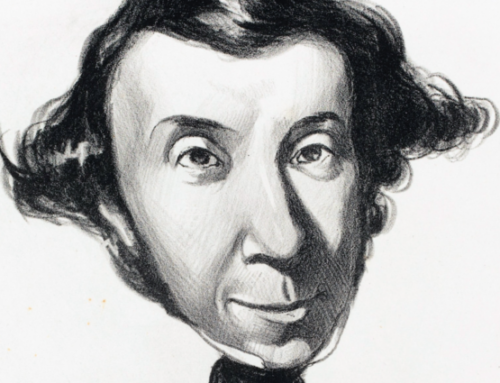Here we are, in the Fall (that’s Autumn to us Brits, but what’s in a name?): that season full of mists and mellow fruitfulness. This time twenty-eight years ago I was walking around with a pumpkin shaped belly, waiting for the arrival of my first baby. Now her younger sister is in the same condition, a few weeks from giving birth. We have been joking about how everyone seems to want to touch your belly when you are pregnant (‘ah, twins?’ someone said… ‘no, actually, just one big baby!’). While it feels like a bit of an imposition for the mother-to-be, perhaps there are some wholesome reasons underlying the cheeky tactility that her condition seems to invite.
Because, ironically, everyone likes to indulge in a bit of what Chesterton called baby-worship. Even people who say they are ‘pro-choice’ love an almost-born, kicking, wriggling baby. We are inevitably in awe of a woman who is about to give birth (who knew your body could, er, stretch like that?). It is such a momentous thing that we cannot avert our gaze or deny the feeling of sheer magic that it imparts. We no longer have fertility goddesses–nor do many still acknowledge the incarnate Godhead that did not spurn a woman’s womb. The French version of the Hail Mary brings it down to earth with the expression ‘le fruit de vos entrailles’. Literally: the fruit of your guts. And indeed, people do have a gut reaction in front of a life about to be made manifest: a new person who did not exist nine months ago. Incarnation grabs us, existentially, whether we like it or not. It is just too monumental to ignore.
A case in point. The British artist Damien Hirst (he of the rotting shark and the diamond encrusted skull) has just unveiled an extraordinary series of sculptures commissioned for the Sidra Medical and Research Center in Qatar. Titled The Miraculous Journey, they consist in 14 monumental bronze depictions of the development of a child in the womb. There is a delightful irony to the fact that it has taken Muslim engagement both with modern art, and with the care of women and children (which is what the Sidra centre does), to display, through the hands of a secular mainstream artist not usually associated with such things, a reality that post-Christian Western culture for the most part refuses to acknowledge or be consistent about.
Meanwhile in Rome, in the same week, the Pope dwelled (not for the first time) on the specific vocation of women, rooting it first and foremost in that mysterious fact of life which Damien Hirst depicts so powerfully in his Qatar sculptures: the Womb.
“Many things can change and have changed in our cultural and social evolution, but the fact remains that it is the woman who conceives, carries in her womb and gives birth to the children of men.” Yet, continued Pope Francis, echoing Blessed John Paul II in Mulieris Dignitatem: “This is not simply a biological matter, but carries a wealth of implications for the woman herself, for her way of being, for her relationships, for the way in which we lend respect to human life and to life in general. Calling a woman to maternity, God entrusted the human being to her in an altogether special manner.”
Yet he also issued a warning–that with regard to this subject, we should guard against two particular fallacies, two extremes “that destroy woman and her vocation.”
“The first is to reduce maternity to a social role, to a task, albeit noble, but which in fact sets the woman aside with her potential and does not value her fully in the building of community. This is both in the civil sphere and in the ecclesial sphere.” Having written extensively on the relevance of spiritual maternity to society in general and the Church in particular, I have to admit that this was music to my ears. He also nailed one important result of this fallacious way of conceiving of the women question–leading to the second fallacy. “In reaction to this, there is the other danger… promoting a type of emancipation which, in order to occupy spaces taken away from the masculine, abandons the feminine, with the precious traits that characterize it.”
The Pope then uses an interesting term: presenza (presence). “Even in the Church,” he said, “it is important to ask oneself: what presence does the woman have?” And he went on to say that this presence should not be one of service, not servitude. This is an important distinction, and one which I suspect has to be rooted in the very concept of presence: a concept which hints at a particular ethos, an atmosphere in which particular human characteristics can be made manifest. He has also spoken of making ‘space’ for the feminine contribution. And this fascinates me: for surely the characteristic of this feminine contribution, rooted both factually and symbolically in the womb, is that it, itself, makes space. Space for new life. Space for existing life to be nurtured and encouraged. Space for the Other, who may need support, respect, strength. To be allowed to breathe. To be, in its turn, an authentic presence.
And yet this fruitfulness, this vocation to the mysterium tremendum that is at the heart of what it means to be human, cannot exist unless space is made for it. To have a Pope who is so determined to foster the right conditions, to make space for – to give oxygen to–the feminine, is an encouraging sign for our times. As I contemplate the mysterious gift that my daughter carries, as yet hidden, and yet so close to its moment of epiphany, I cannot help but be swept up in a tide of exultation. A child, any child, leaping in an ordinary woman’s womb, magnifies the meaning of life and fulfills our heart’s desires in a way no other event can quite match. The coming into being of this event, the creation of a new human voice, a completely unique set of human finger-prints, a new presence on the stage of human history: this, indeed, is a miraculous journey.
Books on this topic may be found in The Imaginative Conservative Bookstore.








Ah! Bliss! Two Caldecotts for the price of one!
Does it strike no one else as ironic that so many feminists, to whom pornography and advertising debased women, now protest topless or nude? Is it not delicious that the people who abandoned the dignity described above, now descend into the indignity they once decried? It is so much fun watching Nemesis descend on Hubris! Please pass the popcorn!
I disagree. Rather, the Pope is adding to the ever-growing imbalance toward the feminine that plagues Western society. It’s almost gynolatry. Just look around you. See the lack of equal determination to make space for the masculine. Or any such effort at all, even a weakling one, from anyone at any of the commanding heights of the culture.
You misunderstand her, I think. In her talk to the MaterCare conference in Rome last month (https://docs.google.com/file/d/1fcBXYfSpWZYx3fHseFfpiEIZMjOQ7iMiJ1DG2-_pJHtist0q9FR74QDWrc8G/edit?usp=sharing&pli=1) Leonie showed how the unitive and procreative come together when a welcoming “space” is created – not for woman instead of the man, but for the CHILD, whether masculine or feminine. It is life, it is the child, who needs a welcome, and the Culture of Life needs a “temenos”, a sacred space, in which life can take root. In that sense the “new feminism” really does transcend the old, precisely because it recognizes the complementarity of male and female. Each sex discovers its own nature in the other. (An “-ism” is too partial, and philogyny is not the same as gynolatry.)